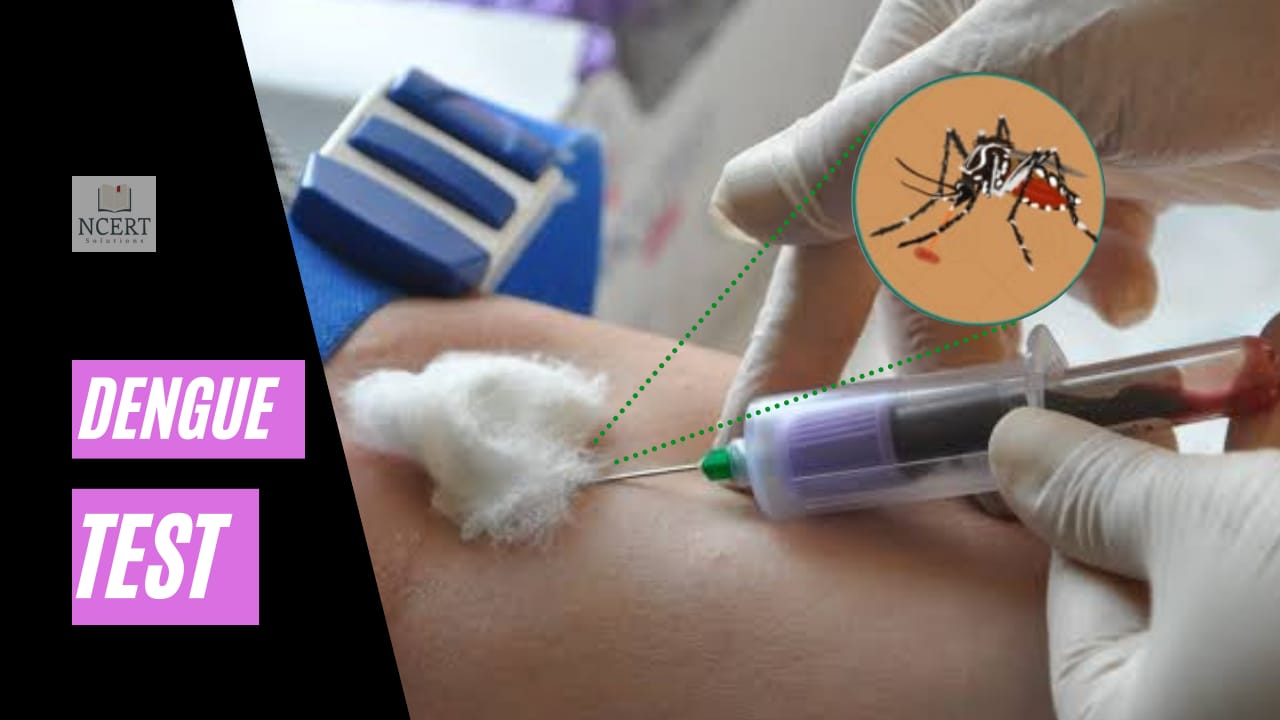Our normal body temperature is 98.6 degrees F (37 degrees C). When the body temperature increases more than the normal state, that condition is called fever or pyrexia.
It is the body’s way of fighting disease. Therefore fever is a symptom of infection. During infection, our blood and lymphatic system produce white blood cells (WBCs), which fight infection (germs). In this condition, our body temperature rises, due to which pressure on our muscles and shivering starts.
Normally our body temperature does not rise above 41 to 42 °C (105.8 to 107.6 °F).
Fever can also be caused by many other conditions, which are sometimes common and sometimes can lead to serious condition.
This includes viral, bacterial and parasitic infections, such as the common cold, urinary tract infection, meningitis, malaria, appendicitis, etc. Its non-infectious causes include vasculitis, deep vein thrombosis, drug side effects, and cancer.
It is different from hyperthermia. Hyperthermia is an increase in body temperature that exceeds a setpoint temperature. This is either due to the generation of too much heat or not enough heat to be let out.
What is a fever temperature?
- The range of low-level fever is around 100 degrees F – 101 degrees F.
- 102 degrees F is an intermediate level for adults, but infants (0-6 months) should seek medical care right away.
- High-level fever ranges from 103 degrees F-104 degrees F.
- If the temperature rises severely, ie 104 degrees F can be – 107 degrees or higher. A very high fever is called hyperpyrexia.
People’s conditions may vary in low or mid-level fever. However, a fever with a temperature of 104 degrees F (40 degrees C) or higher can be dangerous, requiring immediate home treatment or medical attention.
If this is not done, the patient may have serious problems, especially in the case of infants, children, and the elderly.
Types of Fever
1. Continuous
If the body temperature is higher than normal for more than 24 hours and this temperature has not changed by more than 1 degree Celsius.
2. Remittent
This fever keeps on rising or falling or does not come down at all. In this, the body temperature remains above normal throughout the day and the temperature does not change more than 2 °C during this period. This type of fever is seen in patients with typhoid and infective endocarditis.
3. Intermittent
In this fever, in a 24-hour period, the high temperature lasts only for a few hours and the temperature remains normal for the rest of the day. This process repeats itself over and over again, usually every other day or a few days.
4. Hectic or Septic
A high temperature, which does not improve even with antipyretics (fever medicine), may indicate septic fever. At this stage, the patient should be looked after and reviewed to prevent any deterioration in his health.
5. Pale Ebstin Type
In this, there is a frequent change in body temperature. It may take 3 days for the temperature to rise, the temperature may remain high for 3 days and then decrease over 3 days. After that, the fever of the patient subsides for 9 days.
6. Low / Periodic Grade
It is a recurring fever that lasts from a few days to a few weeks. There are intervals between having a fever in which no symptoms are present. This fever has a pattern that can be caused by repeated infections, malignancy, or non-infectious inflammatory diseases.
Fever attacks that follow the same sequence are responsible for non-infectious factors such as Still’s disease, rheumatoid arthritis, Crohn’s disease and Bechet’s syndrome.
Symptoms of Fever
The following are the common symptoms of fever:
- Temperatures over 100.4 F (38 C) in adults and children
- Shivering, shaking, and chills
- Muscle and joint pain or pain in other parts of the body (rheumatoid arthritis)
- Frequent or excessive sweating
- Rapid heart rate or palpitations
- Skin flushing or heating
- Fainting, dizziness, or lightheadedness
- Eye Pain
- Weakness
- Loss of appetite
- Headache
- Vomiting
- Diarrhea
- Being lazy
- Runny nose
- Sleepiness
- Sore throat, cough, hoarseness
Causes
It occurs when a part of your brain, called the hypothalamus; also known as your body’s “thermostat”, rises above the set point of your normal body temperature.
When this happens, you may feel cold and overdress or wrap up in blankets, or you may even shiver, which generates more heat in the body.
Normal body temperature varies throughout the day, as the body temperature will be low in the morning and rise in the late afternoon or evening. Although most people consider a temperature of 98.6 F (37 degrees C) to be normal.
Your body temperature can range from 97 F (36.1 C) to 99 F (37.2 C) per degree, which is considered normal.
Factors responsible for increasing the body temperature:
- Virus infection
- Bacterial infection
- A malignant tumor
- Heat exhaustion due to heat
- Problems related to inflammation, such as rheumatoid arthritis – inflammation of the lining of the joints
- Certain immunizations, such as diphtheria, tetanus and acellular pertussis – DTaP or pneumococcal vaccine
Prevention
You may be successful in preventing fever by reducing your risk of infectious diseases. Here are some tips that may help:
1. Wash your hands often and teach the same to your children. Do this, especially before eating, after using the toilet, spending time in crowds, visiting an infected person, touching animals traveling in public vehicles, etc.
2. Teach your children to wash their hands properly. Apply soap thoroughly on the front and back parts of the hands and then wash them thoroughly with water.
3. Always carry hand sanitizer with you. Use it when you don’t have soap and water available.
4. Avoid touching your nose, mouth or eyes, as these pathways can allow viruses and bacteria to enter your body and cause infection.
5. Cover your mouth and nose when sneezing or coughing, and ask your children to do the same. Whenever possible, stay away from others while sneezing and coughing, so that they do not fall prey to this infection.
6. Avoid sharing cups, water bottles and utensils with your children.
Diagnosis
It is very easy to diagnose the fever. It can be diagnosed at home by checking the patient’s body temperature with a thermometer.
Rest is recommended for the patient, as physical activity further increases the body temperature. It is a common disease that is curable. In most cases, the cause of the fever is discovered early.
The problem starts due to fever when a person has a fever for a long time and its cause is not easily detected.
The cause of fever can be classified as follows:
- Infectious agent
- Swelling
- Immune or metabolic disorders
- The genetic abnormality in the functioning of the inflammasome
The clinical process of fever varies with each category (persistent, transmitted, intermittent, intermittent). It is not always possible to find the cause of chronic fever. In these cases, a fever of unknown origin is detected.
A person can have a fever if:
- The mouth temperature is higher than 37.7 C (99.9 F).
- A rectal (anal) temperature higher than 37.5-38.3 C (100-101 F).
- A temperature under the arm or inside the ear is higher than 37.2 C (99 F).
Fever is a sign rather than a disease. When doctors confirm that the body temperature is higher than normal, they suggest certain diagnostic tests, which may be determined based on other symptoms. This includes blood tests, urine tests, X-rays and other imaging scans.
Risks and complications
It usually does not cause serious complications, but a sudden, very high fever or a prolonged fever can be dangerous. Due to this, the following complications can occur:
Hallucinations – Adults are more prone to delusions from rising body temperature than children. It’s possible that your child may start seeing things that aren’t really there because of a fever (like seeing dolls flying in his room or insects walking all over him). Confusion is more likely to occur when the temperature is 102 degrees F or higher.
Fever attacks – When children have fever attacks, during that time their body starts to feel convulsive, stiff or shivering, which is especially due to fever in children. (“Febrile” comes from the Latin word “fabris”, which means fever). About 2 to 5 percent of children experience this febrile seizure. In children who have had fever attacks before, 30 to 40 percent of children may experience such seizures again.
Dehydration – Dehydration can be mild, moderate or severe. It is important to make up for the lack of fluids that come out of your body immediately. Dehydration occurs when you have severe diarrhea, fever, bloody stools, or are unable to drink any fluids for 24 hours without vomiting or nausea.
A variety of infections can cause fever. In the conditions described above, it is important to seek treatment for the underlying cause of the fever. Watch this video to learn more about fever.




